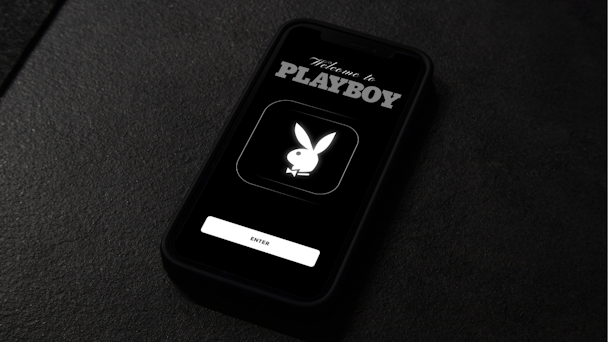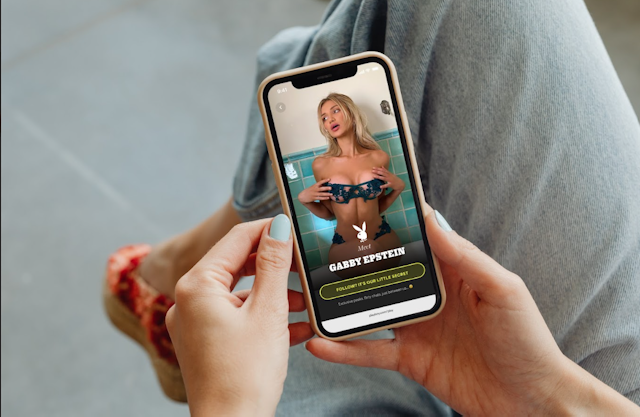From Bunnies to bytes, Playboy hops forward in the modern age
Playboy has done away with far more than just its print editions in recent years. But when you have a complicated past, how do you chart a new course? The Drum uncovers how a media company that once titillated and stirred controversy is remodeling itself as a technologically-savvy lifestyle brand for the modern day.

In its digital era, Playboy has its sights set on influencers and inclusivity / Credit: Playboy
In the fast-evolving digital landscape, even the most iconic symbols of the past must adapt to survive. And who would have guessed that the Playboy Bunny, known for its fluff and frisk, would leap into the new age with both feet?
A rabbit-hole of controversy
Playboy, the proud purveyor of pin-ups founded by the late Hugh Hefner in 1953, has faced its fair share of criticism over the years. Constroversy stems from its first issue, which published nude photographs of Marilyn Monroe taken years before, when she was strapped for cash.
In 2006, Jessica Alba appeared on Playboy’s cover next to the words, “25 Sexiest Celebrities: Jessica Alba: Sex Star of the Year,” allegedly without her consent, which led the actress to threaten legal action against Playboy and request the magazine to pull its March issue. The actress dropped her demands after Playboy made donations to two charities (Keep a Child Alive and Until There’s a Cure) on her behalf and sent her an apology letter penned by Hefner himself.
Moreover, Hefner’s personal life was a subject of public fascination and critique, namely his many relationships with younger women. Allegations of sexual misconduct revealed in A&E’s docuseries, ‘Secrets of Playboy,’ further marred the magazine’s image.
Playboy’s past means it has work to do to change perceptions today.
YouGov data suggests that as of 2022, approximately 37% of consumers held a favorable view of Playboy, while 32% expressed a negative opinion. Another 26% remained neutral on the brand, with 5% indicating that they were unfamiliar with it.
‘Pleasure for all’ & an evolving tone of voice
Playboy’s Rabbit Head logo has long been synonymous with the brand, enjoying an unaided global recognition rate of 99%, the company claims. Yet, in recent years, Playboy has made strides to ensure its relevance in a more inclusive, progressive future. In 2016, the magazine made a radical decision to ban all nudity in its pages, citing the changing media landscape and ubiquity of explicit content online.
While nudity made a return to Playboy in 2017, ‘Entertainment for Men’ was dropped from its covers permanently in exchange for ‘Entertainment for All,’ and then finally, ‘Pleasure for All.’
“We’re currently broadening our demographic and expanding who the Playboy lifestyle serves,” explains Tori Adams, Playboy’s senior manager of communications. “There are aspects of our history that don’t align with our brand values today. It’s important to acknowledge that, while also celebrating the massive amount of good that Playboy has contributed to culture and society.”
These efforts seem to be paying off, as evidenced by Playboy’s increasingly diverse audience, which currently comprises 50% men and 50% women. On the corporate side, women also predominate the workforce, onboarding new talent, ideating marketing campaigns and developing new consumer products.
Goodbye, print. Hello, pixels.
In 2020, the magazine took a leap into the digital landscape and ceased all of its US print editions, which had run for nearly seven decades.
Instead, it shifted its focus to digital content, e-commerce. Later, in 2021, Playboy launched Centerfold, a creator platform that rivaled OnlyFans, and onboarded former Twitch exec Loren Piretra as vice-president of creator and influencer marketing.

Today, Centerfold’s talent pool encompasses a diverse range of influencers, from celebrities like Madisyn Shipman, La Demi and Claudia Conway, to everyday people. “Playboy creators are beautiful, brilliant and bold; they are ambitious, unapologetic, creative, and proud of who they are,” says Adams. “They are also women from all walks of life — teachers, students, surfers, baristas, activists, business owners, professional influencers — you name it.”
While Centerfold has been likened to OnlyFans, Adams notes a few distinctions between the two, namely, career opportunities the platform provides its creators. “We offer a robust Discovery engine, opportunities to model in Playboy photo shoots, philanthropic partnerships, invitations to Playboy events, and various ways to connect with our community of like-minded entrepreneurial creators who value autonomy and free expression.”
Playboy’s current brand strategy
When it comes to current brand messaging, Playboy aims to highlight its uncontentious legacy. Since its inception, the magazine was never just about provocative images. Its pages have proudly showcased culturally significant content, including artwork by Andy Warhol and Salvador Dalí, literature by Ray Bradbury and Jack Kerouac, and interviews with Martin Luther King Jr. and Malcolm X.
These stories of Playboy’s more progressive side are being shared across its social media. During Black History Month, the brand shared a photo of an 18-year-old Aretha Franklin performing at the Playboy Club in Chicago, a venue that treated Black and white performers and patrons equally in an era marked by racial segregation. And, in a nod to Pride, the brand posted the photo and story of Caroline “Tula” Cossey, a trans model who posed nude for Playboy in 1991.
Playboy also leans into its global fame to develop consumer products and draw crowds to experiential events, like the brand’s recent trip to Miami, which launched its Play Hard Vodka Seltzers.
As for Playboy’s future, Adams promises more culturally significant work that will continually surprise its audience. “As a brand, we want to land somewhere that is respectful of our history while also paving the way for thoughtful rebellion and reinvention ... Our job is not to tear the walls down so much as it is to put a fresh coat of paint on the existing foundation.”
This story has been edited for accuracy.
For more, sign up for The Drum's daily newsletters.

